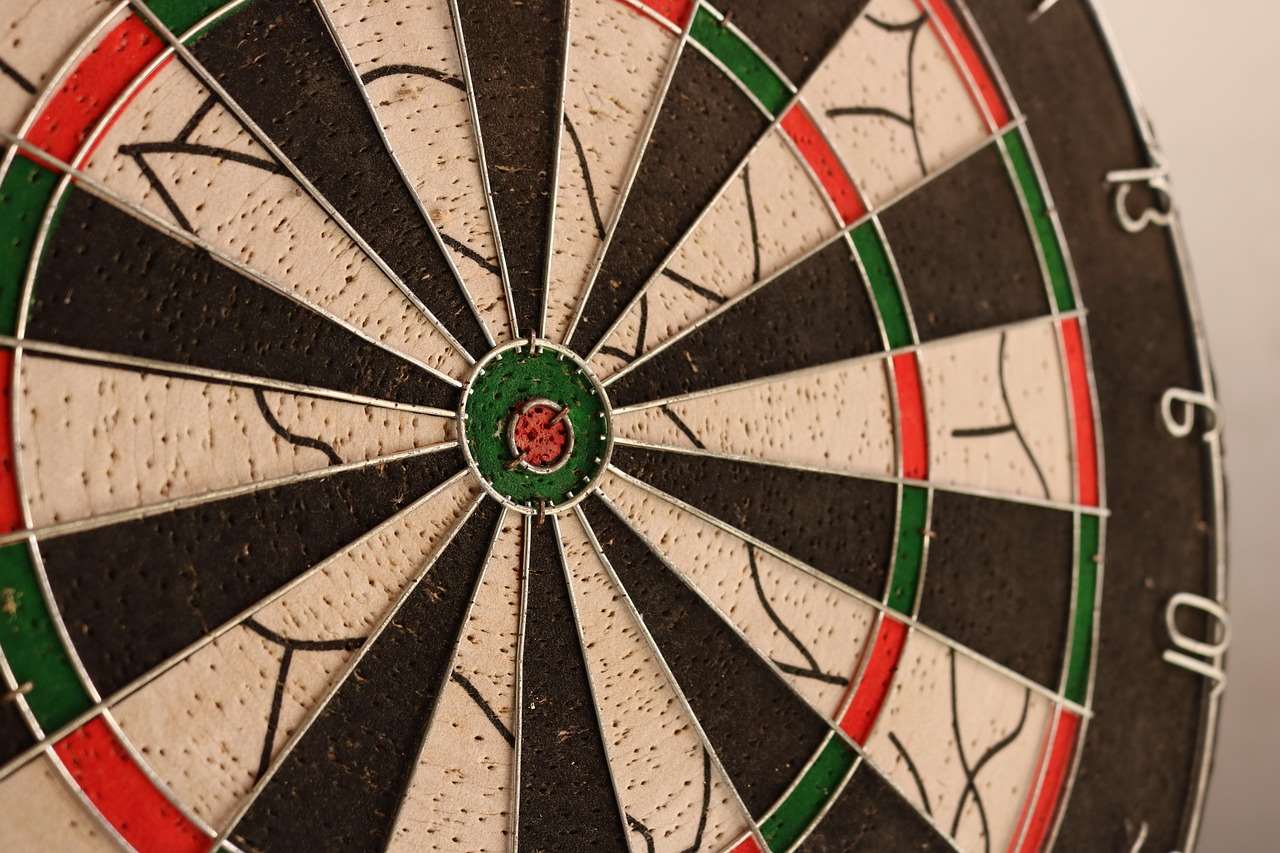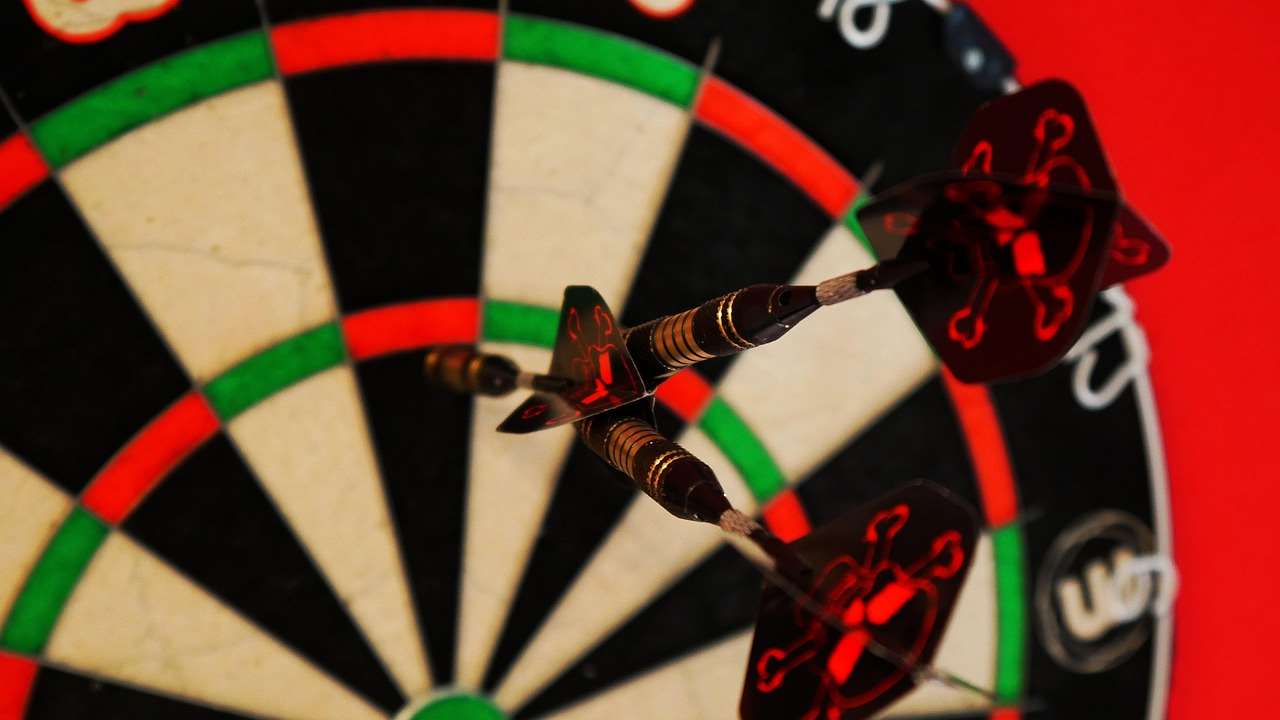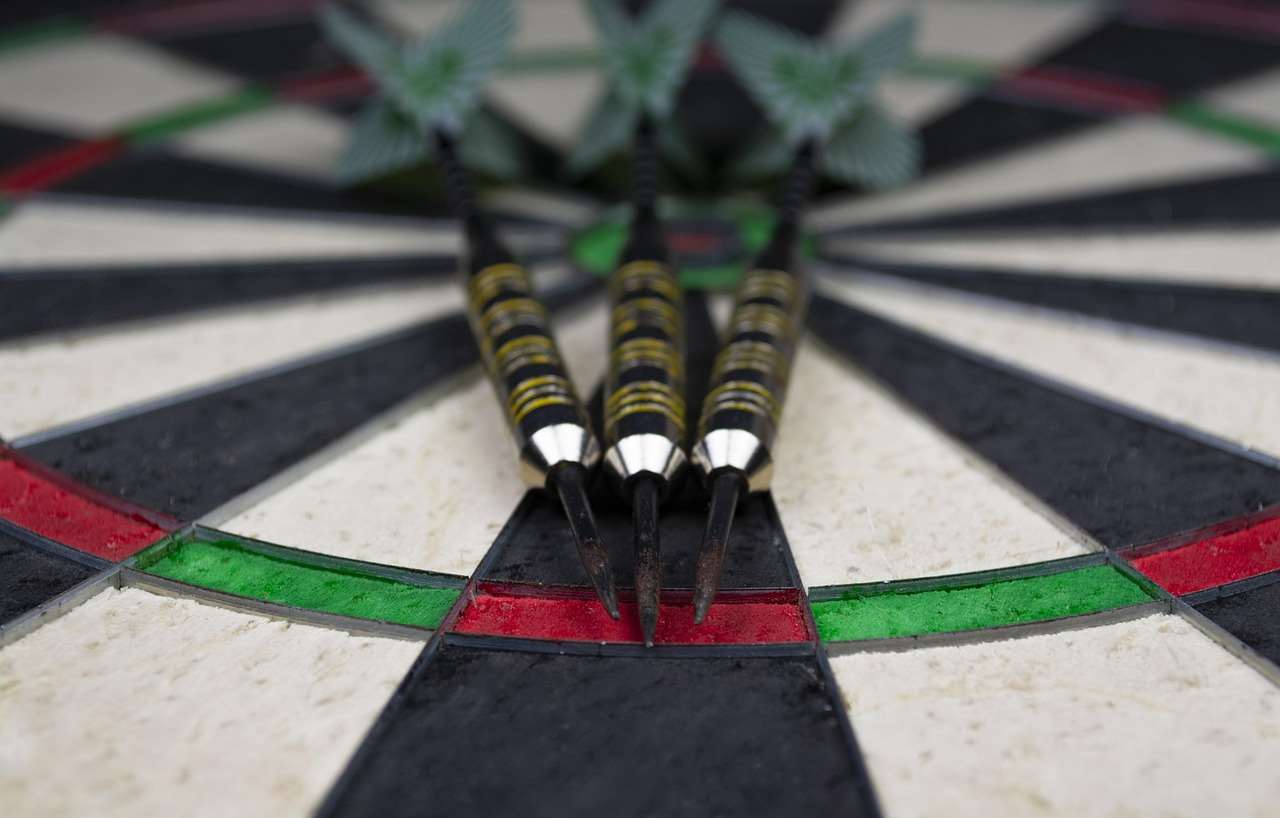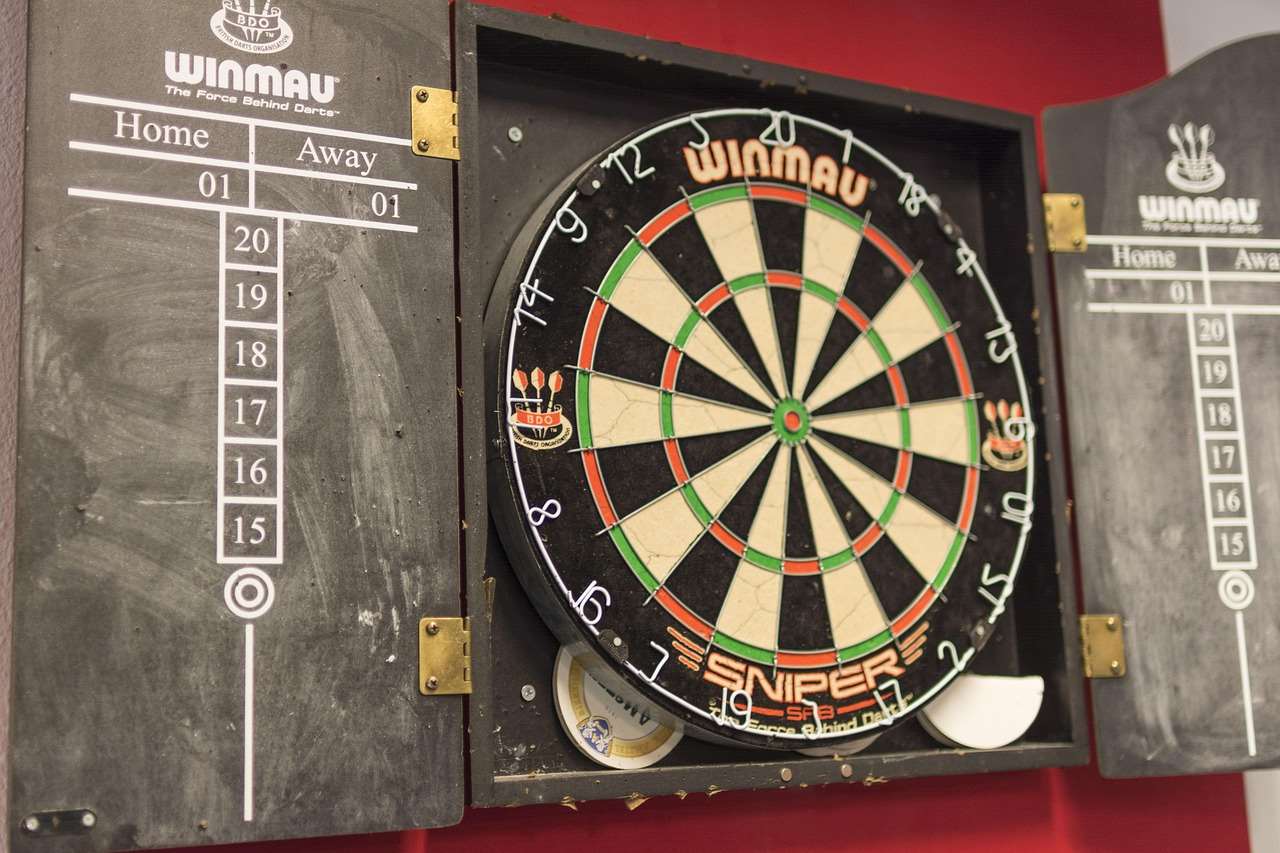While a smooth, textbook throw is often encouraged in darts, some players achieve remarkable success with unorthodox dart throws. This article explores some of these unique styles, analyzing why they work and what we can learn from them, while providing insight into the pros and cons of attempting to develop your own unique darting style.
⚠️ Still Using Pen & Paper (or a Chalkboard)?! ⚠️
Step into the future! The Dart Counter App handles all the scoring, suggests checkouts, and tracks your stats automatically. It's easier than you think!
Try the Smart Dart Counter App FREE!Ready for an upgrade? Click above!
Exploring the World of Unorthodox Dart Throws
The world of professional darts is filled with incredible talent and dedication. You’ll see players that have near perfect standard throws, and others that have unorthodox dart throws that they’ve used to find great success. We will explore some of these unique darting styles.
Before diving in, it’s important to acknowledge that consistency is key in darts. Regardless of your style, being able to repeat your throw reliably is paramount. Mastering the basics of stance, grip, and release is a prerequisite before experimenting with unconventional approaches.

Why do some players adopt unorthodox styles?
- Natural Feel: Some players find a standard technique feels unnatural or uncomfortable. They may adapt their style to better suit their body mechanics.
- Overcoming Limitations: Injuries or physical limitations can force players to develop modified throws.
- Mental Approach: For some, an unorthodox style can provide a mental edge, helping them to relax and focus.
- Evolution: Sometimes these unique styles simply evolve organically over time through trial and error.
Examples of Noticeable Unorthodox Dart Throws
Here are a few examples of players who have succeeded with distinct and unconventional dart throws:
- The “Lifting” Throw: Some players have a prominent upwards arc in their throw, almost “lifting” the dart toward the board. This can generate more spin, but requires precise timing.
- The “Sidearm” Throw: A few players exhibit a more pronounced sidearm motion, bringing the dart across their body during the release. This often results in a flatter trajectory.
- The “Head Tilt” Throw: While not a throw itself, some players such as Steve Beaton, have a very distinct head tilt during their stance and release. This is an identifiable feature and adds to a less orthodox looking setup.
Analyzing the Mechanics
What makes these throws different? We need to understand the mechanics to explore the implications.
* **Release Point:** The point at which the dart leaves the hand. Variations here significantly affect trajectory and spin.
* **Follow Through:** The continuation of the throwing motion after release. An unusual follow through might compensate for other aspects of the throw.
* **Elbow Position:** The angle and movement of the elbow play a crucial role in power and accuracy. Using a darts scorer holder is a great way to keep track of your game.
* **Grip Pressure:** The amount of force applied to the dart. Variations in grip can lead to different release characteristics.
The Pros and Cons of Developing Unorthodox Dart Throws
Consider these points before trying to radically alter your throwing style:
Potential Advantages
- Unique Rhythm: An unconventional throw might give you a rhythm that’s difficult for opponents to anticipate.
- Improved Consistency (for *you*): If a standard throw doesn’t feel natural, an unorthodox darting style might surprisingly improve your consistency because it’s better suited to your individual biomechanics.
- Mental Confidence: Standing out can boost your self-belief and create a positive mental state.

Potential Disadvantages
- Increased Difficulty: Learning an unorthodox dart throw is incredibly hard. It requires time and commitment.
- Inconsistency Under Pressure: Unconventional techniques can be less reliable under pressure, especially if the player doesn’t have countless hours practicing it.
- Risk of Injury: If a throwing technique is unnatural or strains the body, it can be dangerous.
- Hard to Replicate: There is no guarantee that a unique style can be replicated by others, meaning it is difficult to learn and teach to others.
Key Elements for Success with Unconventional Techniques
If you’re determined to pursue an unorthodox dart throw, focus on these crucial elements:
* **Perfecting the Grip:** Find a grip that feels secure and allows for a clean release, no matter your throwing style.
* **Finding The Stance:** The right stance can help you balance, align and feel more confident on the line.
* **Deliberate Practice:** Spend countless hours refining your throw and building muscle memory. Don’t just throw; actively analyze and adjust your technique. Try the Dart game scoring app to keep track of all your progress.
* **Video Analysis:** Record yourself throwing and carefully analyze your motion to identify areas for improvement.
* **Seeking Guidance:** Consider working with a darts coach who can provide personalized feedback and help you optimize your style. It may also be worth consulting a biomechanics specialist.

Focusing on Repeatability
No matter your style, repeatability is the most important factor. This means practicing your stance, the arc of your arm, and the release of your dart repeatedly until it becomes second nature. Your main focus should be on maintaining control.
Related Skills and Techniques
Even with an unorthodox dart throw, certain fundamental skills are essential:
Developing a Solid Stance
A stable and balanced stance is crucial for consistent throwing. Experiment with different foot positions and weight distribution to find what works best for you. Consider the impact of your stance on your darts league performance.
Mastering Grip Pressure
Finding the right grip pressure is essential for a clean and controlled release. Too much pressure can cause tension, while too little can lead to erratic throws. It requires dedication and a lot of practice to perfect, but it is time well spent.

Improving Your Follow-Through
A smooth and consistent follow-through is vital for directing the dart accurately. Ensure your arm extends fully towards the target after release. This is also a great way to minimize any risk of injury by maintaining control of the technique.
Mental Toughness in Darts
Darts is as much a mental game as it is a physical one. Developing mental resilience is critical for success, especially with an unorthodox dart throw, which may face more scrutiny. The same techniques that make you unique can cause you to struggle at times. Try not to get frustrated and consider the following:
* **Visualization:** Practice visualizing successful throws to build confidence and improve focus.
* **Positive Self-Talk:** Use positive affirmations to combat negative thoughts and maintain a confident mindset.
* **Stress Management:** Learn techniques to manage stress and anxiety, such as deep breathing or meditation.
* **Focus:** Keep a focus on the process of playing darts and avoid distractions, by focusing on one dart at a time.

Dealing with Pressure
The ability to perform under pressure is a hallmark of top dart players. Practice simulating match conditions to prepare yourself for the challenges of competitive play. It also helps to understand the key factors that contribute to good performance under pressure.
Conclusion
While a standard, textbook dart throw is often encouraged, the world of darts has seen its fair share of players who have achieved remarkable success with unorthodox dart throws. The key is to develop a style that feels natural and repeatable for *you*, regardless of how unconventional it may appear. Before experimenting with unique darting styles, make sure you understand the pros and cons and be prepared to dedicate significant time and effort to refining your technique.
Ultimately, the most important thing is to find what works best for you and enjoy the process of improvement. Now go out there, practice hard, and see if you can find your own unorthodox path to darts success! You can even use the free darts checkout table pdf to get a head start!
Hi, I’m Dieter, and I created Dartcounter (Dartcounterapp.com). My motivation wasn’t being a darts expert – quite the opposite! When I first started playing, I loved the game but found keeping accurate scores and tracking stats difficult and distracting.
I figured I couldn’t be the only one struggling with this. So, I decided to build a solution: an easy-to-use application that everyone, no matter their experience level, could use to manage scoring effortlessly.
My goal for Dartcounter was simple: let the app handle the numbers – the scoring, the averages, the stats, even checkout suggestions – so players could focus purely on their throw and enjoying the game. It began as a way to solve my own beginner’s problem, and I’m thrilled it has grown into a helpful tool for the wider darts community.